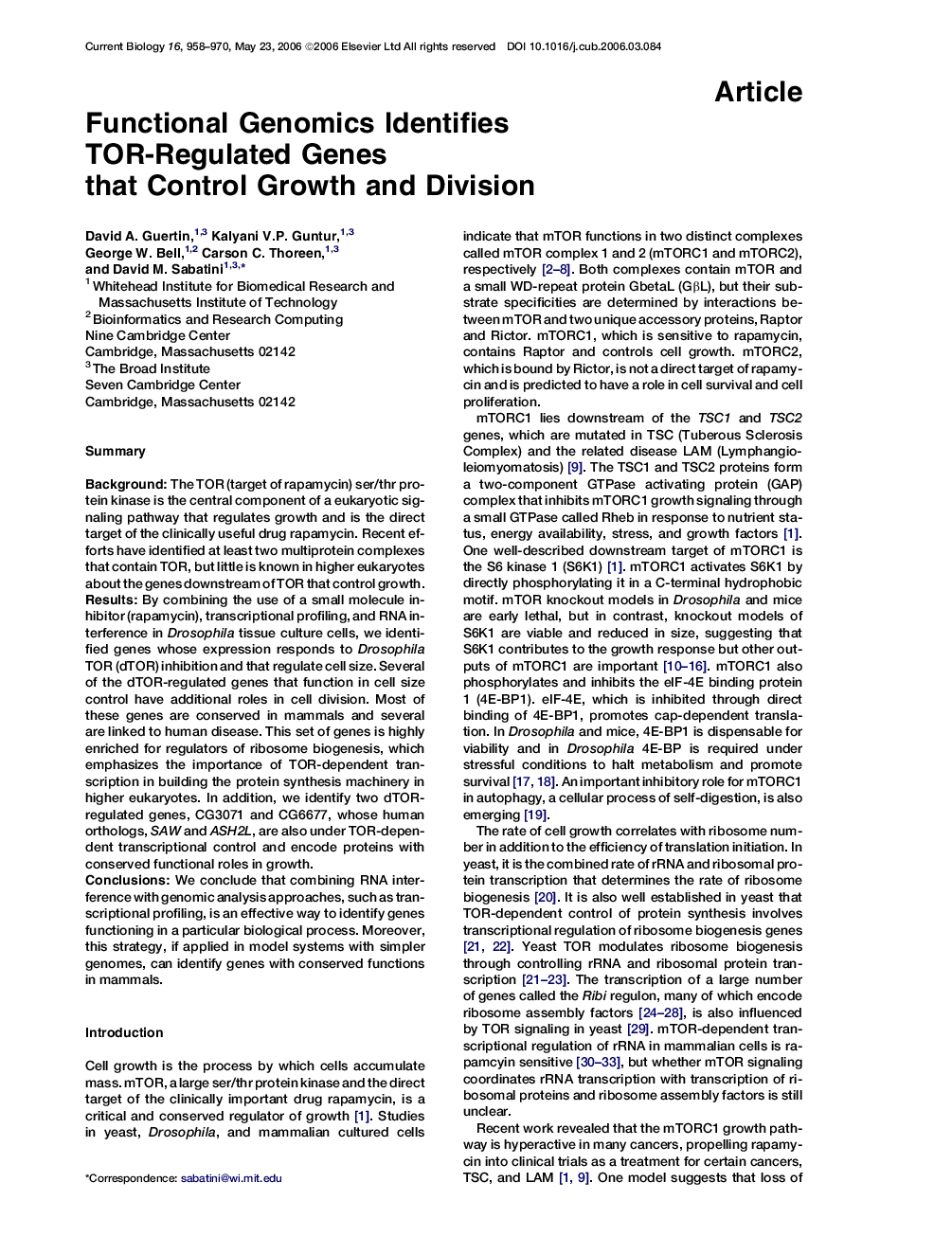| Article ID | Journal | Published Year | Pages | File Type |
|---|---|---|---|---|
| 2045406 | Current Biology | 2006 | 13 Pages |
SummaryBackgroundThe TOR (target of rapamycin) ser/thr protein kinase is the central component of a eukaryotic signaling pathway that regulates growth and is the direct target of the clinically useful drug rapamycin. Recent efforts have identified at least two multiprotein complexes that contain TOR, but little is known in higher eukaryotes about the genes downstream of TOR that control growth.ResultsBy combining the use of a small molecule inhibitor (rapamycin), transcriptional profiling, and RNA interference in Drosophila tissue culture cells, we identified genes whose expression responds to Drosophila TOR (dTOR) inhibition and that regulate cell size. Several of the dTOR-regulated genes that function in cell size control have additional roles in cell division. Most of these genes are conserved in mammals and several are linked to human disease. This set of genes is highly enriched for regulators of ribosome biogenesis, which emphasizes the importance of TOR-dependent transcription in building the protein synthesis machinery in higher eukaryotes. In addition, we identify two dTOR-regulated genes, CG3071 and CG6677, whose human orthologs, SAW and ASH2L, are also under TOR-dependent transcriptional control and encode proteins with conserved functional roles in growth.ConclusionsWe conclude that combining RNA interference with genomic analysis approaches, such as transcriptional profiling, is an effective way to identify genes functioning in a particular biological process. Moreover, this strategy, if applied in model systems with simpler genomes, can identify genes with conserved functions in mammals.
